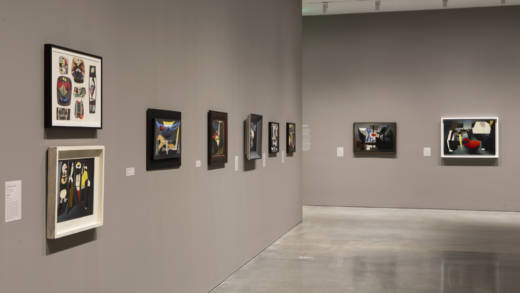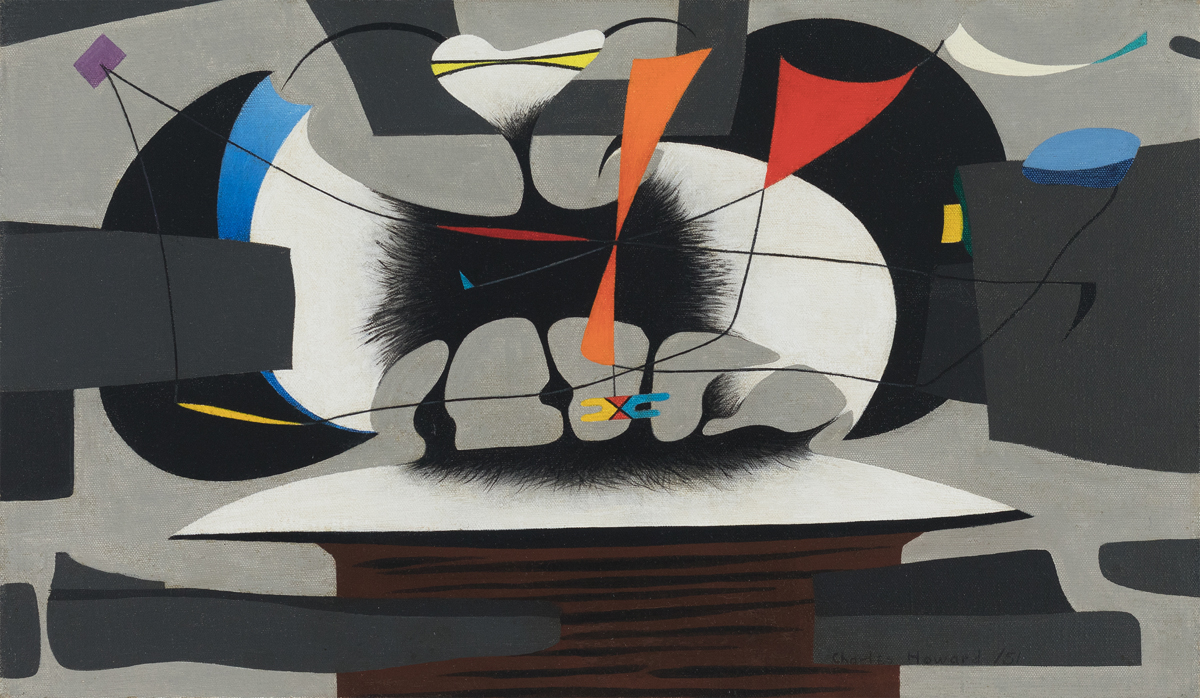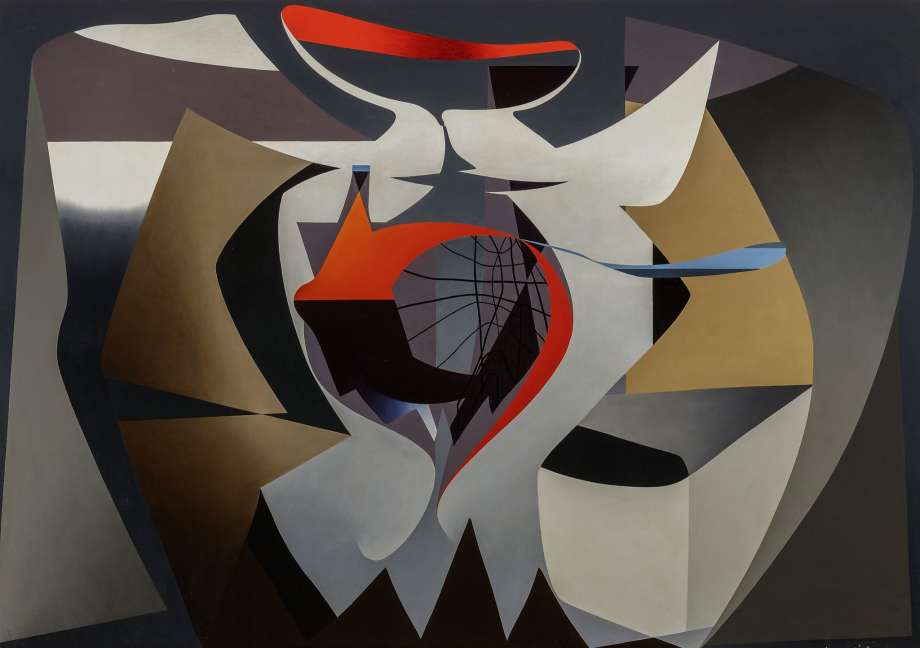BAMPFA’s Charles Howard: A Margin of Chaos brings a long-lost artist home.
Charles Howard graduated from Berkeley High School and attended UC Berekeley in the 1910s. His father, John Galen Howard, the principal architect of the University of California campus, founded the Berkeley architecture program. His mother, Mary Robertson Bradbury Howard, an accomplished watercolorist, hobnobbed with the Carmel-by-the-Sea plein air painters. His brothers Henry (an architect), Robert (a sculptor), and John (a painter), no doubt contributed to Charles Howard’s initial choice to train, first at Cal and then at Harvard, for a distinctive vocation all of his own: journalism.
But in his mid-20s, after an eye-opening tour of Europe, Howard succumbed to the pull of the visual arts. He devoted himself to painting and quickly made a name for himself in New York, where he exhibited his work at the Whitney Studio Club. Although he identified with no particular school, in the 1930s he showed mainly alongside surrealists such as Max Ernst and Yves Tanguy in the movement’s historic New York and London exhibitions.
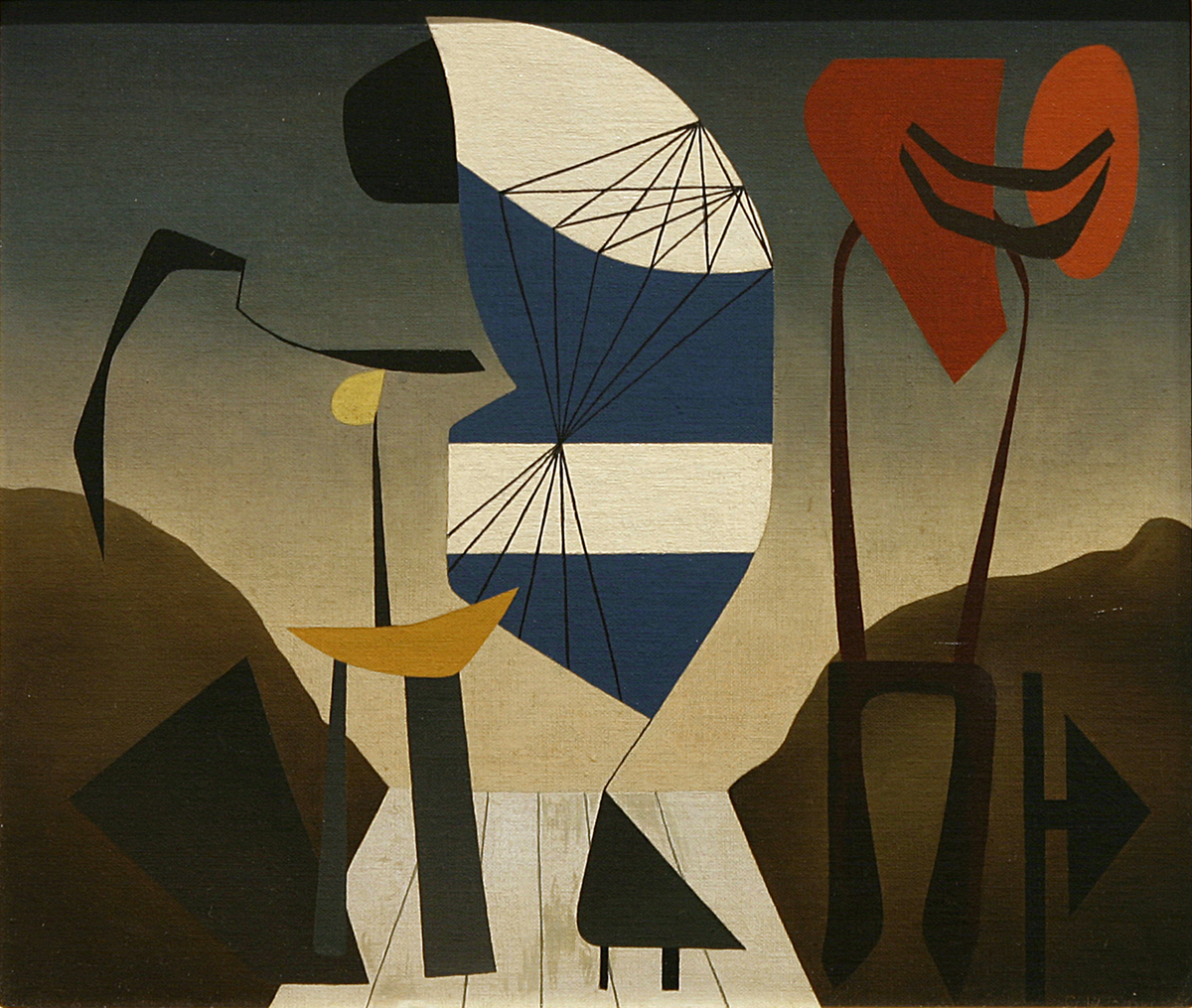
Stylistically speaking, his paintings from this period — The Dove, for example — fall somewhere between geometric abstraction and biomorphism. In the 1940s, Peggy Guggenheim recognized him as an up-and-coming talent and invited him to exhibit at her Art of This Century gallery, among a diverse roster of artists that included Salvador Dalí, Marcel Duchamp and Wassily Kandinsky. Back in the Bay Area, the California Palace of the Legion of Honor organized a retrospective of Howard’s work in 1946.
Since then, however, no American museum has followed suit, until this summer — when BAMPFA’s curator of modern and contemporary art, Apsara DiQuinzio, orchestrated the artist’s return to Berkeley. The exhibition features 75 abstract paintings, works on paper and graphics representing the full sweep of Howard’s career.
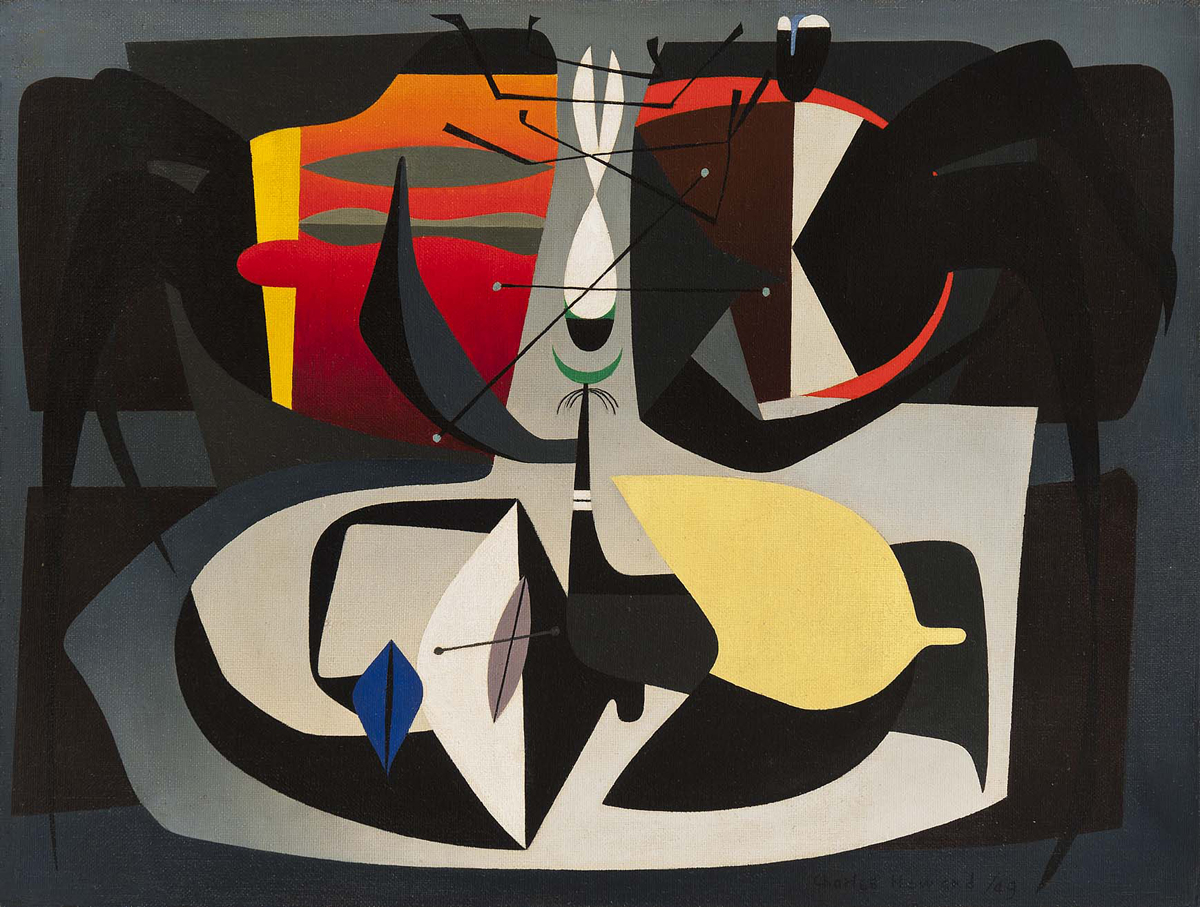
Even though Howard doesn’t figure in most histories of 20th-century art, his commitment to formal experimentation makes him both a modernist anomaly whose work resists stylistic categorization and an exemplar whose stylistic restlessness spurred innovation. Borrowing visual idioms from the arts of the past as well as from his contemporaries, Howard recast sources — from Giorgione to Miró — in ways that still look strange and new today.
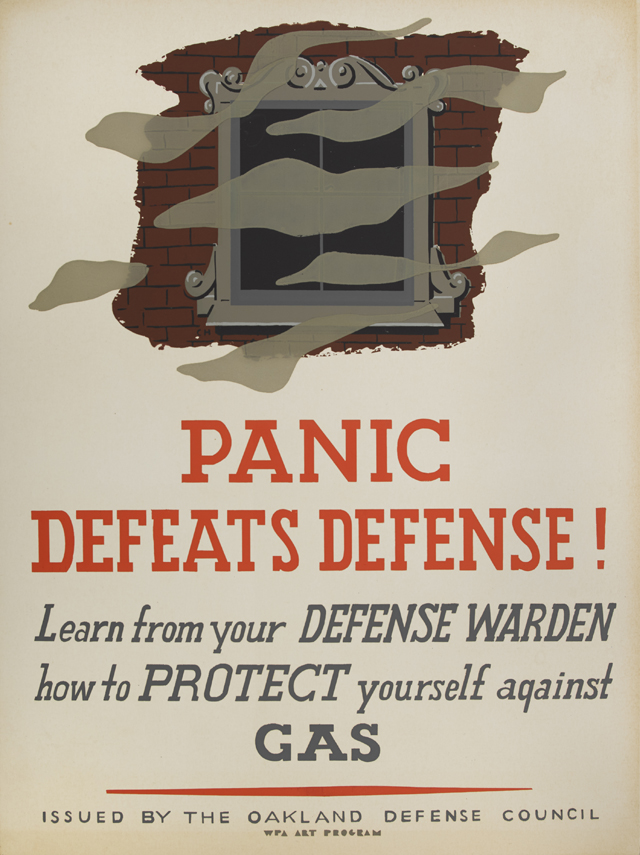
Howard’s career resisted circumscription within geographical as well as formal boundaries. As a young man, he left (then) provincial San Francisco for the East Coast. After a decade, he moved on to London. There, throughout the 1930s, he consorted with refugee artists from all over Europe, marrying the English painter Madge Knight.
